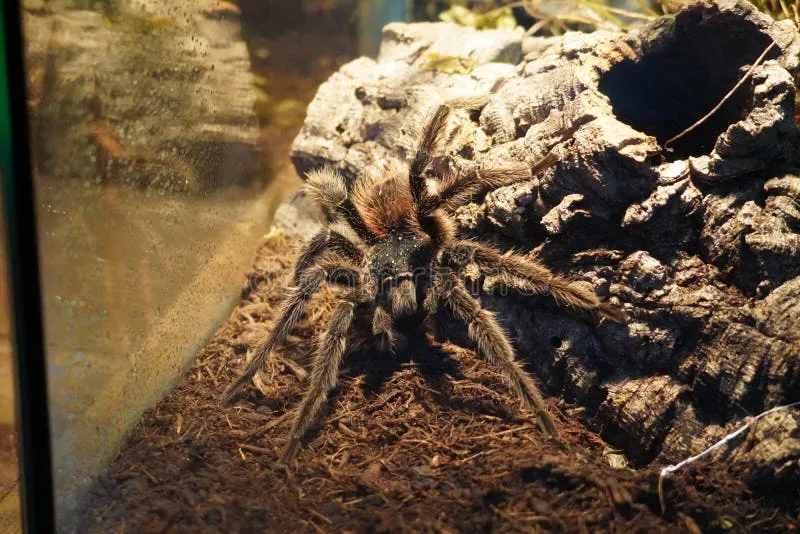Bird Eater Tarantula Habitat Essentials
Caring for a Brazilian Bird Eater Tarantula, one of the largest tarantula species, involves creating a suitable habitat that mimics its natural environment. This ensures the tarantula’s well-being and promotes its longevity. The habitat must provide adequate space, appropriate temperature, and humidity levels, and a safe environment where the tarantula can thrive. A well-designed habitat is critical for the tarantula’s physical and psychological health. A proper setup minimizes stress and allows you to observe your pet’s natural behaviors. The right habitat is more than just a cage; it is the tarantula’s entire world.
Choosing the Right Enclosure
The enclosure you choose will be the tarantula’s home, so size and material are important considerations. A glass or clear plastic terrarium is ideal because it allows for good visibility and easy cleaning. Ensure the enclosure has a secure lid to prevent escapes, as these tarantulas can be fast and surprisingly strong. The enclosure should also have adequate ventilation to prevent the buildup of excessive humidity, which can lead to health issues for your tarantula. Consider the tarantula’s arboreal or terrestrial nature when choosing your enclosure, ensuring there is enough height or floor space as needed.
Ideal Enclosure Size
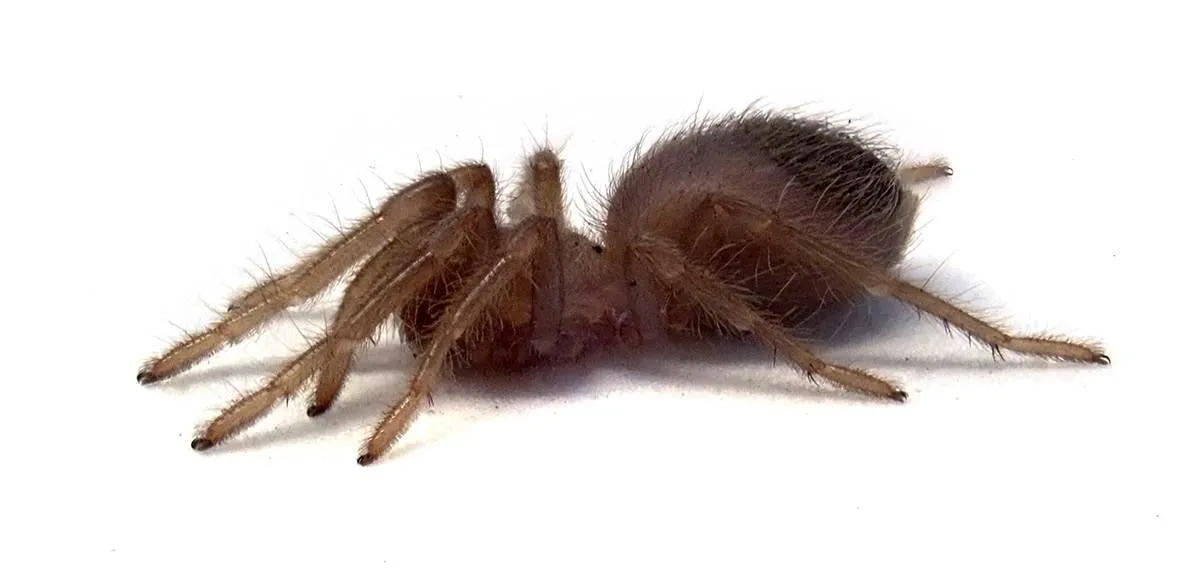
The size of the enclosure should be appropriate for the tarantula’s size and growth stage. A juvenile Brazilian Bird Eater Tarantula can start in a smaller enclosure, such as a 10-gallon tank, but will quickly outgrow it. As the tarantula grows, you’ll need to upgrade to a larger enclosure, typically a 20-gallon or larger tank for an adult. The general rule is to provide a space that is roughly three times the tarantula’s leg span in width and length. The height is also important, especially for terrestrial species which appreciate the floor space.
Substrate Selection
The substrate, or bedding, is a crucial part of the tarantula’s habitat. It serves multiple purposes, including providing a surface for the tarantula to walk on, helping to maintain humidity levels, and allowing the tarantula to burrow if it chooses. Suitable substrates include a mix of peat moss, vermiculite, and coconut fiber. These materials hold moisture well, providing the necessary humidity. Avoid substrates that are toxic or can easily mold. The substrate should be deep enough to allow for burrowing behavior, usually about 4-6 inches for adults. Ensure the substrate is clean and replaced regularly to maintain a healthy environment.
Temperature and Humidity Control
Maintaining the correct temperature and humidity levels is crucial for the health and well-being of your Brazilian Bird Eater Tarantula. These factors affect the tarantula’s metabolism, molting process, and overall comfort. Proper temperature and humidity mimic the tarantula’s natural habitat, reducing stress and promoting healthy behaviors. Regularly monitoring these parameters is essential to provide a suitable environment. Using the right equipment and understanding the needs of your tarantula are key to a successful and rewarding pet ownership experience.
Maintaining Optimal Temperature
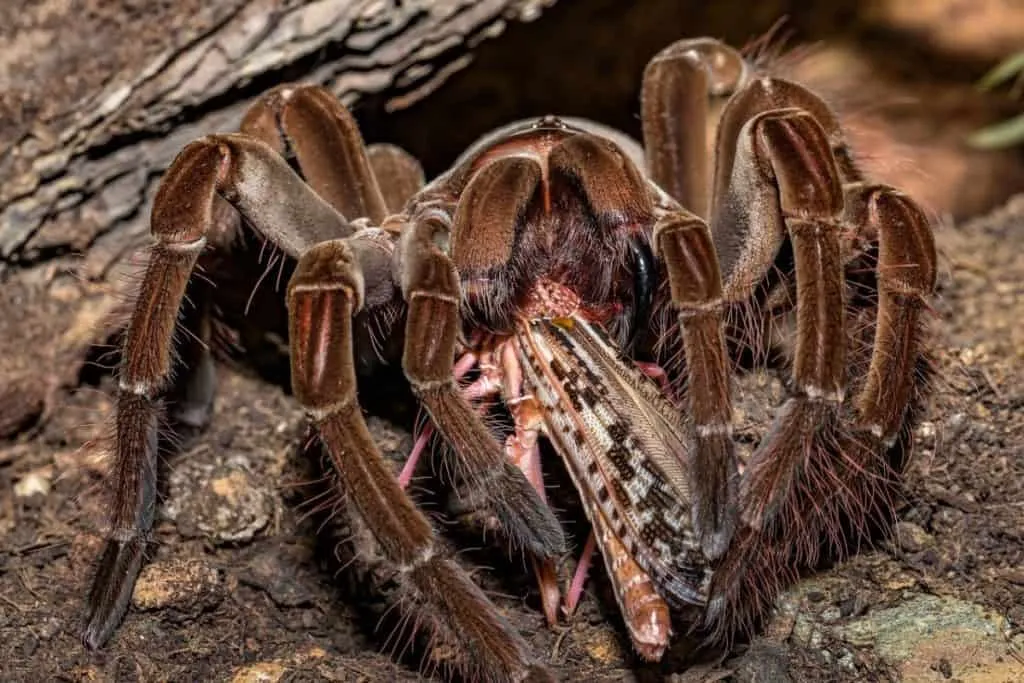
Brazilian Bird Eater Tarantulas thrive in temperatures between 75-85°F (24-29°C). You can achieve this using a heat mat placed on the side of the enclosure or a low-wattage heat lamp. Avoid placing the heat source directly under the enclosure, as this can overheat the substrate and potentially harm the tarantula. Always monitor the temperature with a reliable thermometer. Ensure that there’s a temperature gradient within the enclosure so the tarantula can move to cooler areas if needed. Regular temperature checks are essential for the comfort and health of your tarantula.
Humidity Levels and Monitoring
Humidity levels for the Brazilian Bird Eater Tarantula should be maintained between 70-80%. This can be achieved by misting the enclosure with water 2-3 times a week, or as needed to maintain the proper level. Ensure the enclosure has proper ventilation to prevent mold and mildew growth. Using a hygrometer, which measures humidity, is essential for monitoring the levels accurately. Make sure the substrate is slightly damp but not waterlogged. Overly high humidity can lead to respiratory problems, while overly low humidity can make molting difficult. Regular monitoring and adjustments are crucial to keep your tarantula happy and healthy.
Feeding Your Bird Eater Tarantula
Feeding your Brazilian Bird Eater Tarantula is a straightforward process, but it’s crucial to get it right to ensure the tarantula’s health and growth. Providing the correct food sources and feeding frequency will ensure your tarantula gets the necessary nutrients. These spiders are opportunistic feeders, and their diet will vary based on their stage of life. A well-fed tarantula is a healthy tarantula, and understanding the needs of your pet will help you provide the best care possible. Make sure the food is safe and that your tarantula is eating properly.
Appropriate Food Sources
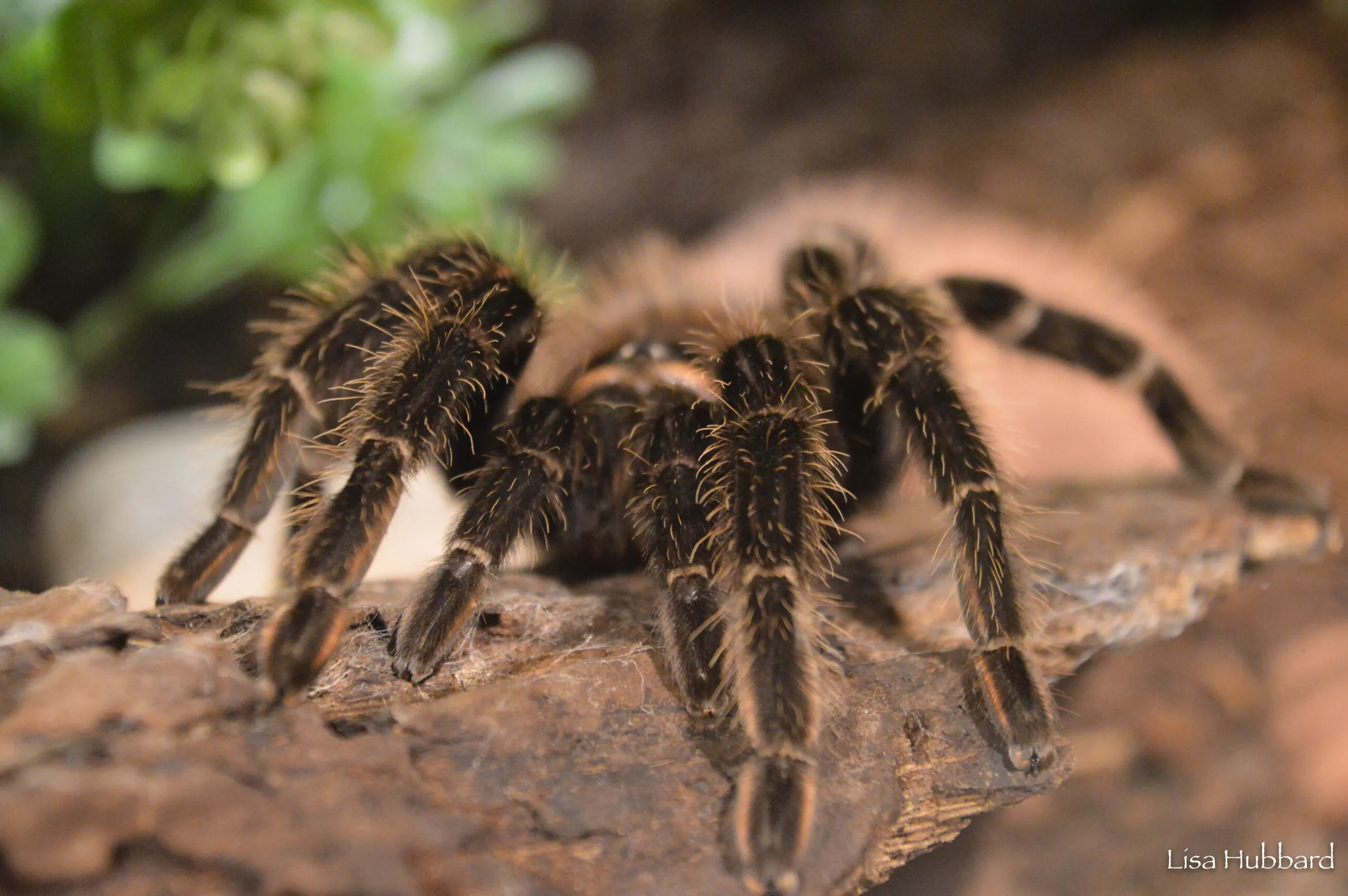
The primary diet of the Brazilian Bird Eater Tarantula consists of insects. Crickets, mealworms, and roaches are all excellent food sources. The size of the prey should be appropriate for the size of your tarantula; the prey should be no larger than the tarantula’s body. You can also occasionally offer larger prey items like small lizards or pinky mice. Always ensure that any insects you offer have been gut-loaded, meaning they have been fed nutritious food before being fed to the tarantula. This process provides additional vitamins and minerals to your pet. Avoid feeding wild-caught insects, as they may carry parasites or pesticides.
Feeding Frequency and Portion Size
Feeding frequency depends on the tarantula’s age and size. Spiderlings and juveniles should be fed 2-3 times a week, while adults can be fed once a week or even less frequently. Overfeeding can lead to obesity and other health problems. Observe your tarantula’s abdomen; it should be round but not overly distended. Remove any uneaten prey within 24 hours to prevent stress on the tarantula and reduce the risk of mites. Always provide fresh water alongside the food. Adjust the feeding schedule as needed based on the tarantula’s behavior and molting cycle. A well-fed tarantula will grow and thrive.
Watering and Hydration
Providing access to fresh water is vital for the survival of your Brazilian Bird Eater Tarantula. Tarantulas need water to hydrate their bodies and to help with the molting process. Water is an essential element of the habitat and must always be readily available. There are a couple of ways to provide water, but no matter what, you should make sure it is fresh and clean. Make a regular routine to check the water, and do not assume that a tarantula can survive long without water.
Water Bowl and Refilling
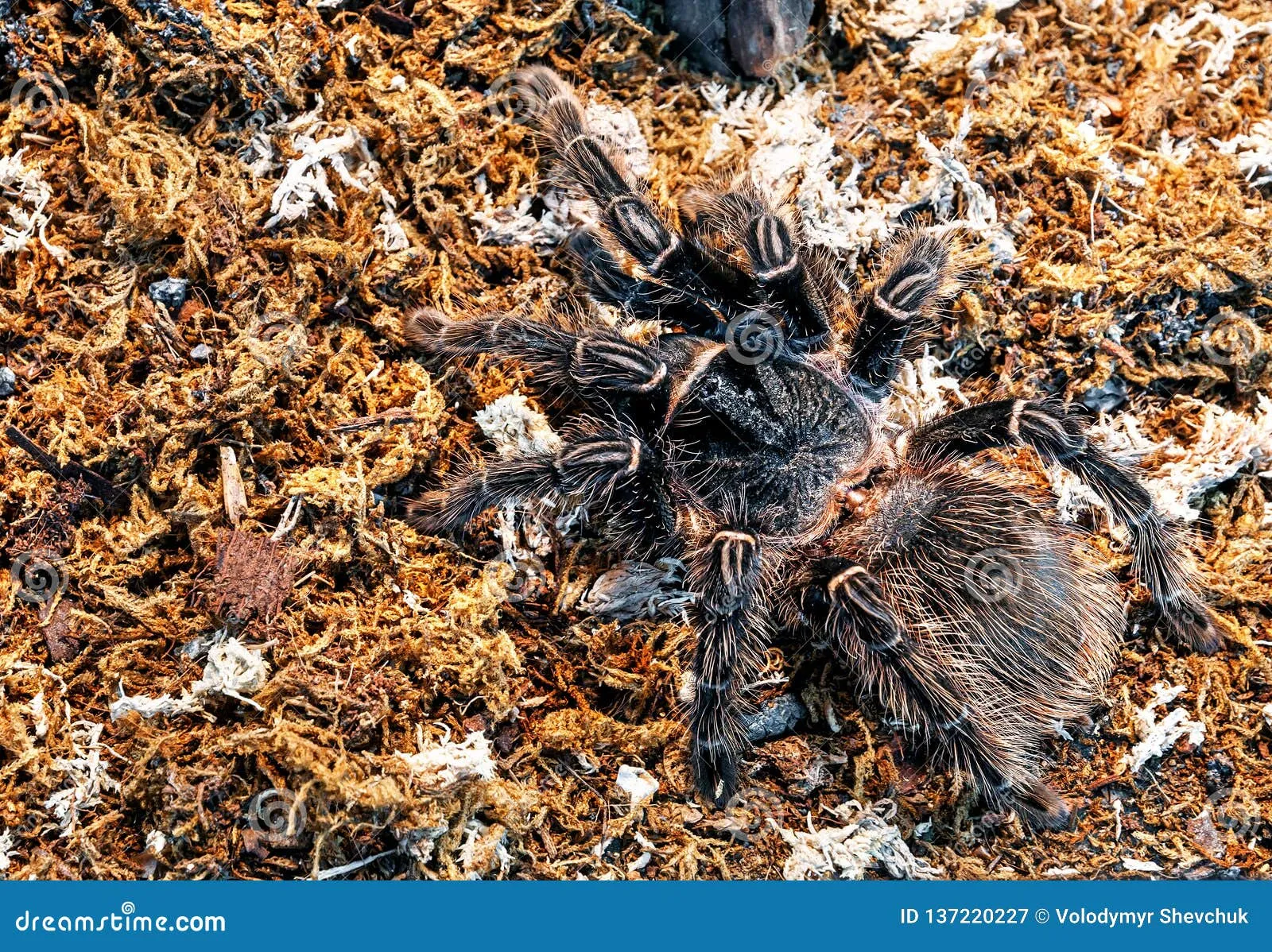
A shallow water bowl is essential in the tarantula’s enclosure. It should be shallow enough to prevent the tarantula from drowning, and it should be easy for the tarantula to access. The water bowl should be cleaned and refilled regularly, at least once or twice a week, to ensure the water remains fresh and free of debris. You can use a small, stable dish or a water bowl specifically designed for reptiles and arachnids. It is advisable to use distilled or dechlorinated water to avoid harmful chemicals. Always keep the water bowl in an accessible location for the tarantula.
Misting and Humidity
In addition to a water bowl, you may also need to mist the enclosure to maintain the proper humidity levels, especially in drier environments. Use a spray bottle filled with dechlorinated water to lightly mist the enclosure’s sides and substrate. Avoid spraying the tarantula directly. Misting should be done as often as needed to keep the humidity between 70-80%. Monitoring the humidity with a hygrometer will help you determine the frequency of misting. Be careful not to over-mist, as excess moisture can lead to mold growth and respiratory problems for your tarantula.
Handling and Safety
While the Brazilian Bird Eater Tarantula is not typically aggressive, it’s essential to handle it with care and respect. These tarantulas can bite, and their bites can be painful, although they are generally not life-threatening to humans. Understanding how to handle your tarantula safely, and knowing the signs of stress, are crucial to avoiding unnecessary risks. Always prioritize the tarantula’s well-being when deciding whether or not to handle it. Avoid handling your tarantula if it is molting or appears stressed. By following safe practices, you can minimize the risk of injury to yourself and your pet.
Safe Handling Practices
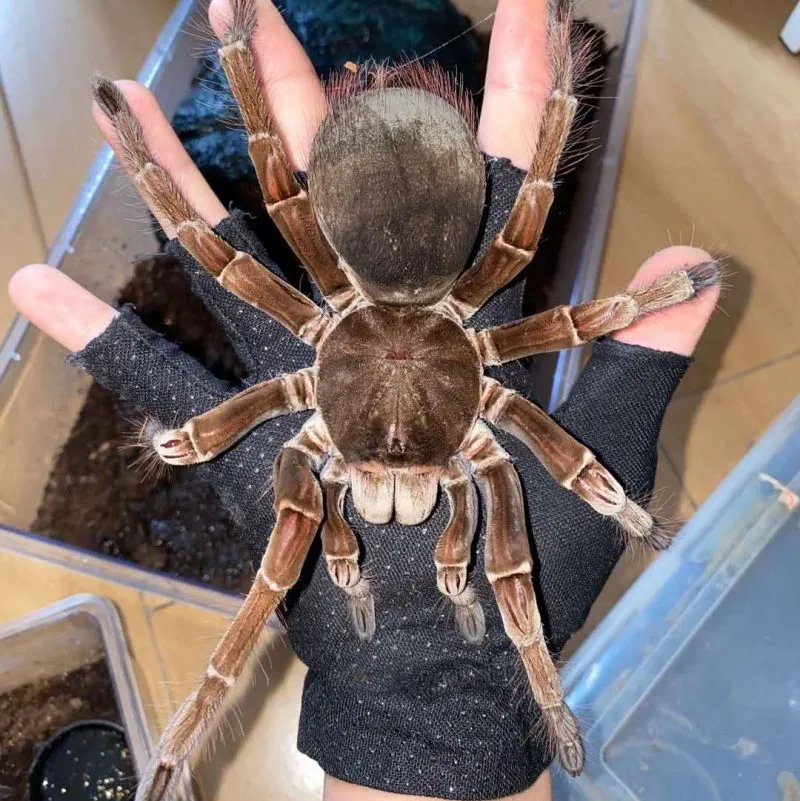
If you choose to handle your Brazilian Bird Eater Tarantula, do so with caution and gentleness. The best way to handle the tarantula is to gently coax it onto your hand, allowing it to walk. Never try to grab or startle the tarantula, as this can lead to a defensive reaction. Keep your movements slow and deliberate. Always handle the tarantula over a soft surface, such as a bed or a carpet, in case it falls. Always wash your hands thoroughly before and after handling. Consider wearing gloves if you are unsure or uncomfortable, but it is best to let the tarantula walk on your bare skin so that you can detect any sign of stress.
Recognizing Signs of Stress
It’s important to recognize the signs of stress in your tarantula to avoid causing harm and to ensure its well-being. A stressed tarantula may exhibit several behaviors including flicking its legs, raising its front legs in a defensive posture, or trying to flee. If your tarantula displays these signs, it’s best to leave it alone and allow it to retreat to its enclosure. Avoid handling a tarantula that is about to molt; they are very vulnerable and are more likely to become defensive during this time. Always respect your tarantula’s boundaries and prioritize its comfort.
Bird Eater Tarantula Health and Wellness
Like any pet, Brazilian Bird Eater Tarantulas can be susceptible to health issues. Recognizing common problems and providing preventative care will ensure that your tarantula stays healthy and lives a long life. Regular observation and a proactive approach to health management are essential. The health and wellness of your tarantula depend on your ability to provide a suitable environment and be alert to any signs of distress. Remember that early detection and treatment are key to resolving most health problems. Preventative care is always better than treatment.
Identifying Common Health Issues
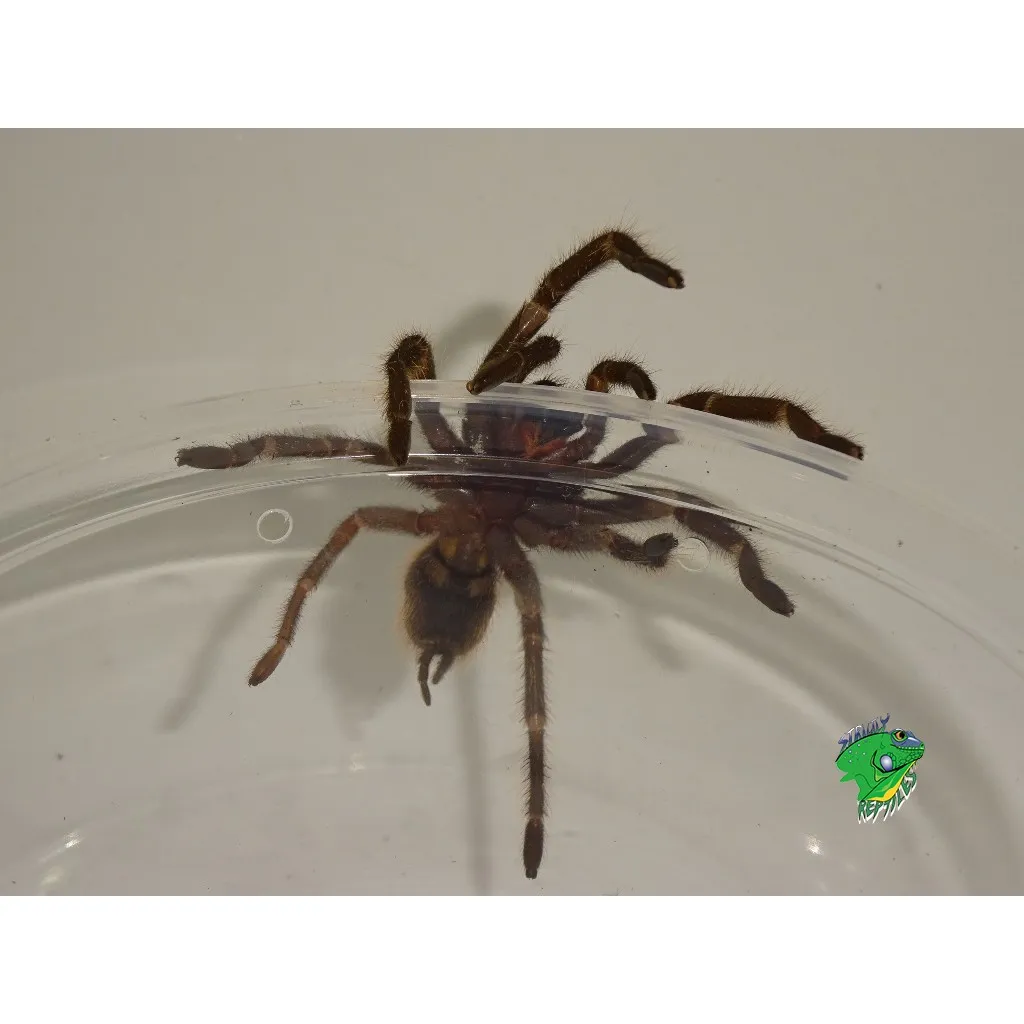
Some common health issues to watch out for include mites, fungal infections, and dehydration. Mites are tiny parasites that can infest your tarantula and its enclosure. Check the tarantula and the substrate for signs of mites regularly. Fungal infections can occur if the enclosure is too humid or poorly ventilated. Symptoms of dehydration include a shriveled abdomen and lethargy. If you notice any of these issues, consult a veterinarian specializing in exotic pets or a knowledgeable arachnid keeper. Quarantine any sick tarantulas from other tarantulas to prevent spread.
Preventative Care and Maintenance
Preventative care is critical to maintaining a healthy Brazilian Bird Eater Tarantula. Keep the enclosure clean by removing uneaten food, fecal matter, and shed exoskeletons promptly. Replace the substrate regularly. Provide fresh water daily. Monitor the temperature and humidity, and make any necessary adjustments. Provide a varied diet of gut-loaded insects. Observe your tarantula regularly for any signs of illness or stress. By taking these preventative steps, you will minimize the risk of health problems and help your tarantula thrive. Consistent maintenance is key to your pet’s longevity and well-being.
Understanding Molting
Molting is a natural process for tarantulas, as they shed their exoskeletons to grow. This process can be stressful for the tarantula, and it’s important to know what to expect and how to provide the best care during this time. Understanding the molting process is critical to the overall health of your bird eater. Proper care during molting will ensure that your tarantula can grow and thrive. Be patient and avoid disturbing your tarantula during this vulnerable stage.
What to Expect During Molting
Molting is the process by which tarantulas shed their exoskeletons. Before molting, your tarantula may become less active, refuse food, and may appear to lose some of its color. It may also spend more time on its back. The molting process can take several hours or even days. During this time, the tarantula is extremely vulnerable. Avoid disturbing your tarantula during molting. Once the tarantula has molted, its new exoskeleton will be soft and it will need time to harden. Do not feed your tarantula for a few days after molting to allow its fangs to harden.
Providing a Safe Molting Environment
To provide a safe molting environment, ensure that the enclosure is free from disturbances. Provide plenty of substrate for burrowing. If your tarantula is an arboreal species, provide objects to climb on. Maintain the proper temperature and humidity levels. Do not feed the tarantula until its fangs have hardened after molting. If the tarantula has difficulty molting, contact an experienced arachnid keeper or a veterinarian specializing in exotic pets. A good molting environment will give your bird eater the best chance for a successful molt.
